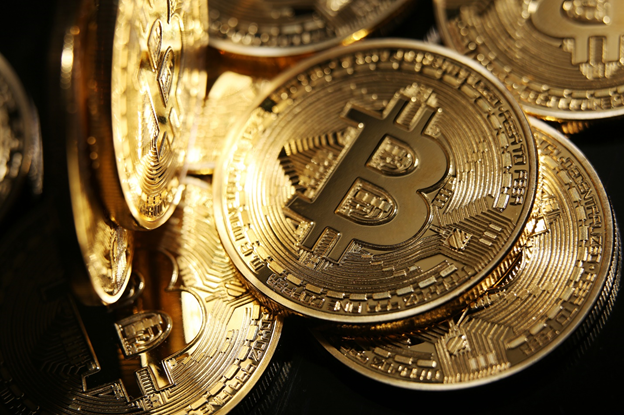Summary
- Crypto mining means gaining cryptocurrencies by solving complex cryptographic equations using high-powered computers.
- A blockchain is essentially a series of data blocks “chained” together, which contain key pieces of data.
- To determine the profitability of crypto mining, all fixed and variable expenses must be considered.
A popular topic in the crypto space, Cryptocurrency mining (or just crypto mining) is a process of gathering cryptocurrency as a reward for work verifying a crypto transaction. But why do people mine cryptos? For some, they might be looking for another source of income. For others, it could be about gaining greater financial freedom without the interference of their governments or banks.

Image Source: © Colicaranica
To be more specific, crypto mining simply means gaining cryptocurrencies by solving complex cryptographic equations using high-powered computers. This whole process, involving validation of data blocks and adding transaction records to a public record is actually what comprises “behind the scenes” of blockchain.
Read More: 5G and Blockchain: Paving Way For Crypto Mining
Is crypto mining legal?
For most of the people, the straight answer is “yes”. However, to precisely determine whether crypto mining is legal or illegal, one needs to consider two factors: the geographic location of the miner and the means used to mine (includes legal and illegal).
When a miner starts to slip into the territory of illegal activities, the mining could be termed as illegal and may attract authorities’ attention. For example, some miners stealthily install malware on unsuspecting users’ computers to “hijack” their processing power for crypto mining. This type of cyber-attack is popularly known as cryptojacking.
Read More: Gazprom subsidiary to open a Crypto mining farm
How crypto mining works?
In essence, crypto miners verify the legitimacy of a crypto transactions and in return they are rewarded for their work in the form of cryptocurrencies. To understand how the cryptocurrency mining process works in a more technical sense, the first thing to understand is the concept of blockchain.
Cryptocurrencies such as Bitcoin use a decentralised ledger known as blockchain. A blockchain is essentially a series of data blocks “chained” together, which contain key pieces of data, including cryptographic hashes. These data blocks are compilation of data transactions that get added to the end of the ledger.
Read More: How Will Norton’s New Mass Crypto Mining Feature Impact the Environment?
Who updates the blockchain and how frequently?
Due to the absence of a centralised regulating authority to manage or control exchanges, the high-powered computers that are used for mining that specific cryptocurrency, are responsible for keeping the ledger current, requiring them to update the blockchain quite frequently. For example, the Bitcoin blockchain gains a new block every 10 minutes through the mining process.
With a cryptocurrency blockchain, anyone can see and even update the ledger because it’s publicly available. One does this by using a computer to generate random guesses in an attempt to solve an equation that the blockchain system presents. After a successful attempt, the underlying transaction gets added to the next data block for approval. However, usually it takes a miner umpteen number of trials before he manages to pull off a successful attempt, and that is what gobbles up a mammoth amount of electricity.
Read More: Cryptocurrency Boom: Blockchain Stocks to Look for In 2021
What do you need for crypto mining?
Bitcoin is designed to adjust according to the difficulty posed to mine one block every 14 days (or every 2,016 blocks mined). The goal is to cap the time required to mine one bitcoin to a maximum of 10 minutes. Since Bitcoin has been around since 2009, the challenges to mine the crypto remain high, which is what necessitates resource-intensive, powerful hardware to execute the process.
The first and most important piece of hardware needed to mine cryptos is a specialised mining hardware called application-specific integrated circuits, or ASICs. A new ASIC device could be quite costly and can cost more than US$10,000, even though much lower priced ASICs are also available. But the price of mining hardware is only a small part of the total expense involved in the mining process. ASICs require very high amounts of electricity, the cost of which can easily surpass the cost of the device using it.
A miner also needs to choose a mining software to join the mining network. This isn’t nearly as expensive as hardware. In fact, quite a few reliable softwares are available for free.
To determine the profitability of crypto mining, all expenses fixed and variable expenses must be considered which includes hardware, software, and electricity. The current value of the crypto one is mining, which consistently fluctuates, must also be taken into account, as well as taxes one might need to pay.




